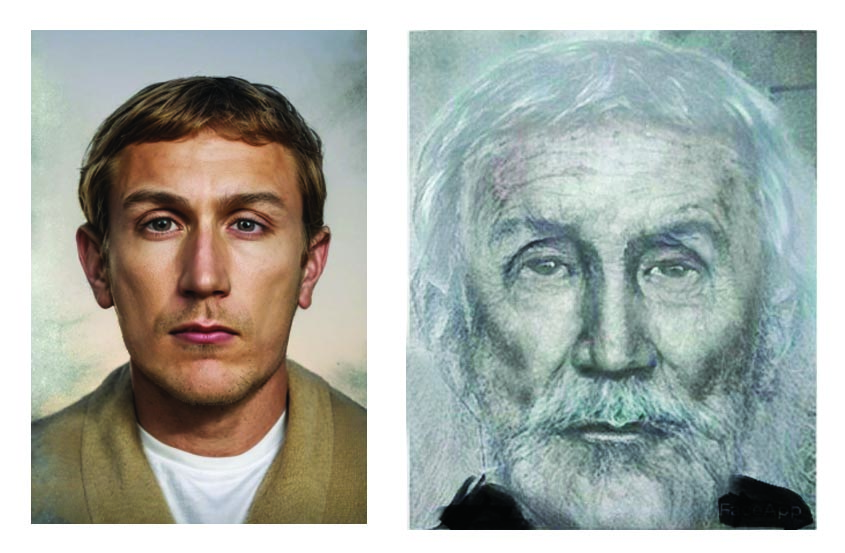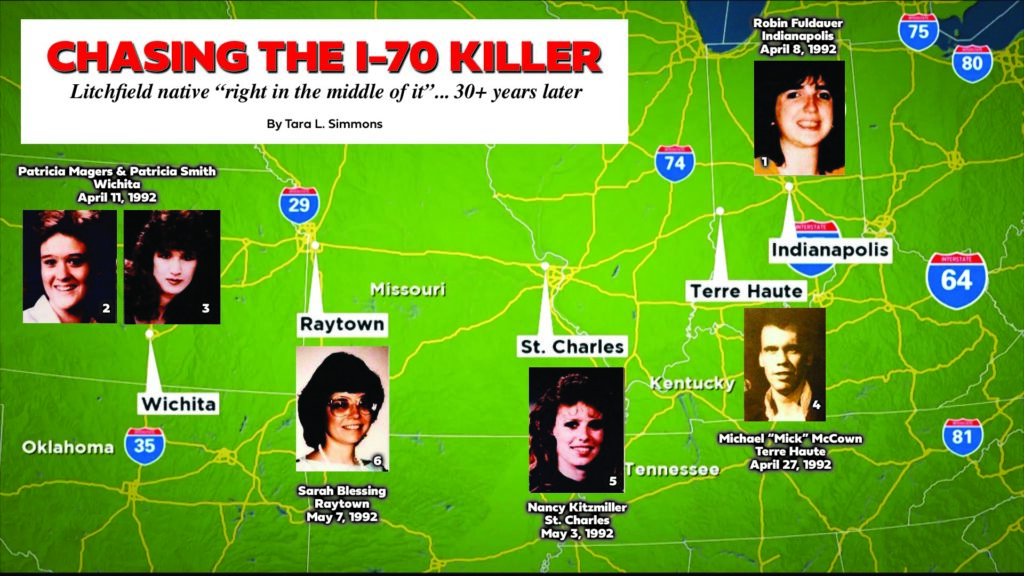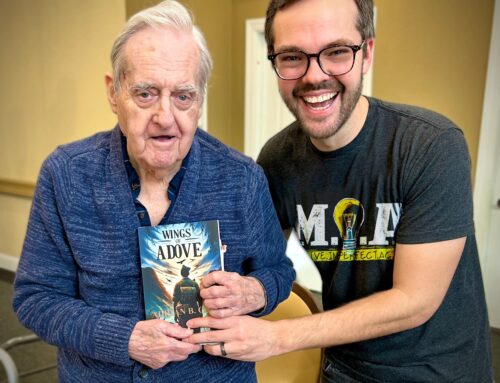


Litchfield native “right in the middle of it” … 30+ years later
by Tara L. Simmons
MADMAN LEAVES SIX VICTIMS
A psychopath traveling along Interstate 70 in 1992 randomly stopped in Indianapolis, Wichita, Terre Haute, St. Charles and Raytown (Kansas City), murdering store clerks at small businesses. In one month, six innocent people were murdered in broad daylight in busy areas.
Robin Fuldauer, manager of Payless Shoe Store in Indianapolis, Indiana, was taken into a storage room at the back of the store on April 8, 1992. She was made to kneel, then shot twice in the head with a .22 caliber handgun, execution style. The killer then rummaged through the cash register, taking less than $100, and then – simply disappeared. Investigators estimated he entered the store, killed Fuldauer, and was gone, in 15 minutes or less.
Three days later Patricia Magers, owner of La Bride d’Elegance in Wichita, Kansas (675 miles to the west of Indianapolis) and her employee Patricia Smith, were murdered in the same fashion. A last minute customer saw a man with a gun in the store. That man tried to get the customer into the back of the store, but he managed to escape.
The killer than drove back east, over 600 miles to Terre Haute, Indiana where he killed Michael “Mick” McCown on April 27. Mick was killed in Sylvia’s Ceramics – his mother’s store. He had come in to relieve her, and his sister, for the day.
A few days later, on May 3, the killer was 200 miles west, in St. Charles, Missouri.
Nancy Kitzmiller was killed while working alone at Boot Village. The killer simply walked in, shot her in the head, and left.
Another 200 miles and four days later, Sarah Blessing was working in her gift shop, Store of Many Colors, on May 7 in Raytown,
Missouri. She also fell victim to what was eventually named The I-70 Killer. A witness on that day, Tim Hickman, saw a suspicious man – their eyes even met at one point.
Hickman went back to work in his own store and then heard a gunshot. He grabbed his own revolver and ran outside, observing the same man leaving Sarah’s store, running behind the strip mall, and disappearing.
The killer always selected a quiet strip mall, and murdered the employee working (usually female, almost always alone) before calmly slipping away. There was no robbery. No sexual assault. No motive other than the thrill of the kill, and little evidence left behind.
Despite the case being featured on Unsolved Mysteries, America’s Most Wanted, Dark Minds and People Magazine Investigates, the killer has never been identified. But the cases never went cold for the officers in those cities.
A FINAL CRACK AT SOLVING
In 2021, with the advancements in DNA, St. Charles Police Captain Raymond Floyd launched a task force, bringing all jurisdictions together along with federal agencies to take one final crack at solving the crimes. The task force selected Litchfield native, Bob Cyphers of KMOV-TV to follow them along, city by city, in the hunt for the killer.
Cyphers and his KMOV crew produced a seven-part award winning series called Chasing the I-70 Serial Killer. Their work led to national exposure of the case in People magazine and on the Discovery Channel, winning an Edward R. Murrow Award and being nominated for an Emmy.
Bob spent his last year before retiring from KMOV working with police departments around the country, bringing publicity to the unsolved I-70 serial killer case. He produced dozens of stories on the case for both broadcast and web. Yet still, now in 2024, the case sits, unsolved. Bob wants it solved as badly as investigators, and family members of the victims. Police departments in all those cities, as well as the FBI and DNA experts, are taking one last, final crack at solving the crime, and Bob is right in the middle of it.
Bob believes that it is unlikely the story will get any more major media coverage, and he is not satisfied with that. So, to keep this story in the public eye forever, he wrote a book on the case, Dead End: Inside the Hunt for the Interstate 70 Serial Killer. Bob traveled over 1,700 miles with investigators, visiting each city where these murders took place, following the footsteps of the killer – talking to original investigators and the new ones, the families of victims and witnesses. He recently completed a media tour in Indianapolis and Terre Haute, Indiana, Vandalia, IL and St. Louis, Columbia and Kansas City, Missouri, and is reaching out to every form of local, small town media that he can, breathing new life into the story, in hopes it may trigger a memory for someone, somewhere that may have a tip or lead about a potential suspect.
“The FBI believes they have a real shot at solving this now, with the advancement in technology and DNA,” Bob explained. “They just need somebody to read something, and pick up the phone. Surely someone knows something.”
THE MURDER WEAPON
All of the murders were committed with a .22-caliber firearm and the victims were usually petite, young women with long dark hair. (One of the victims was a man, but it is believed that the killer may have expected a woman in the store due to the store having a woman’s name, the man being slender and with long hair). All of the stores attacked were specialty stores and were usually only robbed of small amounts of cash. Aside from the Wichita murders, all the victims were alone. All were shot in the back of the head. None of the scenes had any signs of sexual assault and while all stores were robbed, robbery appeared to be a secondary motive. The murders took place in busy areas, but at slow times of day when the stores were deserted, such as after lunch or around closing time. Several of them were in strip malls near I-70.
Police strongly believe the murder weapon may have been an Intratec Scorpion pistol or an Erma Werke ET22 pistol. This is important, as this gun is extremely rare and is also prone to malfunction and jammimg. Not to mention that the barrel is almost a foot long – not too discreet. Detectives think the gun may have an emotional value to the killer – possibly passed down through generations by family, a prized possession. In addition, police discovered that each casing at all of the crime scenes was linked to others by a red substance which appeared to be some sort of jeweler’s red rouge. Rubbing the bullet casings with the rouge would polish the cartridges, allowing the bullets to slide more easily into the chamber. However, authorities have not been able to rule out other .22-caliber firearm models. Midwest authorities linked the killer to the shootings in Texas in 1994, but Texas authorities were not convinced of a connection as different guns were used in each spree. This could be attributed to when St. Charles made the decision to go public and release information about the gun to the media. In essence they told the serial killer they knew what weapon he was using. And then he stopped. Or did he?
Six victims have been positively connected to the I-70 Killer but he is also suspected of shooting three more store clerks in Texas during 1993 and 1994, one of whom survived, as well as a 2001 murder of a store clerk in Terre Haute, Indiana. The two murder victims were Mary Ann Glasscock, who was killed on September 25, 1993, in Fort Worth at the Emporium Antiques store, and Amy Vess, who was shot to death in a dance apparel store in Arlington on November 1. The modus operandi of the Texas killer was very similar to the I-70 killer and he used a .22-caliber firearm, the same caliber as the I-70 killer, but not the same gun.
The investigation has moved past the gun now, and is focusing on science and technology to solve the case. Science that was not available in 1992. Advancements in technology, including DNA, and the proliferation of social media communication. It’s why investigators think they still have a chance of solving this after 30+ years.
OTHER POSSIBLE VICTIMS
Another possible victim is Vicki Webb, who was shot on January 15, 1994, in Houston at the Alternatives Gift Shop. She briefly talked to the shooter before he shot her in the back of the head. The bullet did not penetrate into Webb’s head due to a large vertebrae being hit. The shooter attempted to shoot her again, but his gun jammed, and he left presuming Webb to be dead. She went into hiding after the attack and remained so until Bob was finally able to track her down and convince her to share her story. Some believe her shooter may be the same suspect as the I-70 killer, but Bob believes there are too many discrepancies.
However, in November 2021, Terre Haute police announced that the I-70 killer was a possible suspect again in the murder of liquor store clerk Billy Brossman. On the evening of November 30 security camera footage showed a white male suspect enter the store and pull a gun on Brossman and rob the cash register. The footage then showed the suspect lead Brossman to the back of the store and murder him with a single shot to the back of the head. The murder of Brossman occurred just seven blocks from the murder of Michael McCown and was similar in modus operandi to the I-70 murders. Unlike in the I-70 murders, there is security footage of Brossman’s killer. Bob contacted Tim Hickman, the witness at the murder scene of Sarah Blessing in Raytown Missouri. He asked him to view the security footage and then asked if he thought it was the same man. Hickman’s text back was simply, “YES SIR!”
KEY POINTS ABOUT THE SUSPECT
The killer appears to have no motive, other than the thrill of killing. No sexual assaults, not even evidence of a struggle at any scene, no significant robberies.
He traveled with a purpose – there didn’t have to be so many miles between the killings. He was obviously traveling to those destinations anyway (perhaps a truck driver, traveling salesman, military?). Because who drives 1,200 miles back and forth between Indianapolis and Wichita just for the sake of killing? There would be so many other opportunities in between.
The killer likes to murder his victims during the busiest times of the day, in pain sight. He had very little concern of someone walked in during the murders.
The killer had no getaway vehicle anywhere in sight of the murders. Did he park a get away vehicle in a nearby residential area? Most of the murders were very near residential areas. Did someone notice a strange car in their neighborhood during the time of any of the murders?
He is very in control, exemplified by his composure when surprised, such as the killings of Patricia Magers and Patricia Smith in Wichita, when he likely expected only one woman to be there, but found two, and also had to contend with a surprise customer. Or of Micheal McCown – investigators believe he may have expected a woman to be in the store, since the name was Sylvia’s Ceramic Store. Yet in both instances, he quickly completed his mission, and quickly moved on, mostly undetected, like before.
His weapon of choice was an old German made Navy pistol originally dated back to WWI, with a foot long barrel that constantly jammed and malfunctioned. The killer had an emotional attachment to the weapon and most likely talked to someone about it.
Based on witness descriptions, investigators were able to produce two composite sketches of the killer and a physical description of the suspect. The I-70 killer was described as being a white man in his twenties or thirties, 5’7″ to 5’9″ tall, thin and having lazy eyelids and sandy blond or reddish hair (in 1992). Investigators believe the killer is between 52 and 70 years old if he is still alive today.
The St. Charles police department has full time investigator assigned to this case – Kelly Rhodes.
“Her only job is to catch this guy,” Bob said, “I believe she is going to solve this case, and soon.”
If you are interested in learning more about this case, I urge you to watch the series on YouTube: Chasing the I-70 Killer, and to read Bob’s book, Dead End: Inside the Hunt for the Interstate 70 Serial Killer. It is available from several sources online including Amazon.
“As I said before, we believe someone, somewhere knows something. Maybe 30 years ago they were too afraid to say anything. Maybe they didn’t realize something they saw mattered or was connected to this case,” Bob said. “But it’s not too late. And it’s never too late to do the right thing. That one tip, combined with the new technology on DNA that we are using, could be the very thing that helps catch this killer.”
If you believe you may have even the most insignificant information related to this case, please call the hotline at 800-800-3510.






Leave A Comment